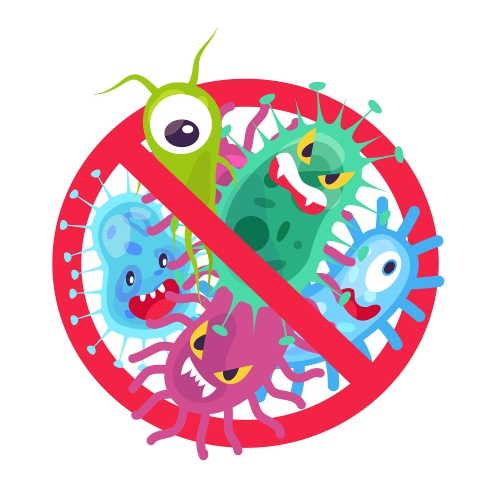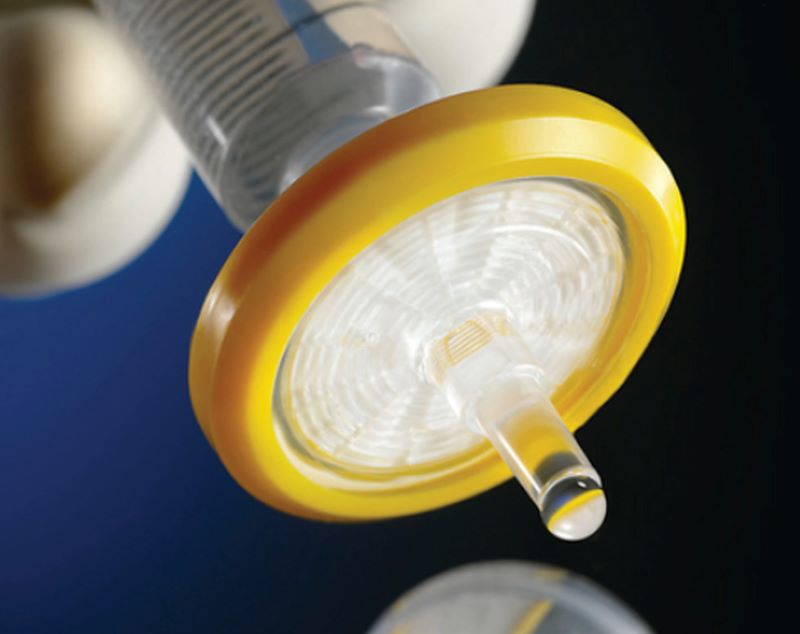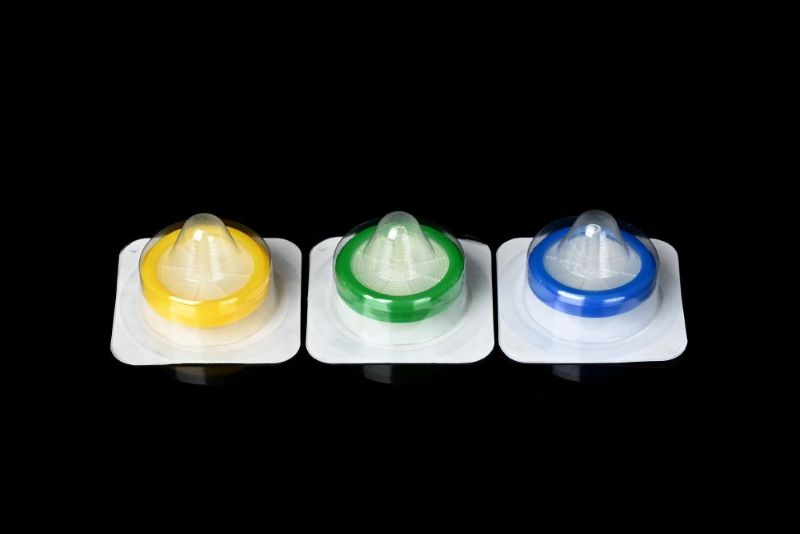0.22μm syringe filter plays a vital role in the fields of biomedicine, chemical analysis, electronic materials research, etc. In the development of new drugs, it effectively filters microorganisms and particulate matter in cell culture media to ensure sterility, thereby ensuring the accuracy and reliability of experimental data; In chemical experiments, it can remove tiny impurities to avoid interference with the experimental process and improve the accuracy of the results; in electronic materials research, it ensures the high purity of ultrapure water and provides support for key technological breakthroughs. With its efficient filtration capability, 0.22μm syringe filters provide reliable guarantees for the smooth progress of scientific research.

0.22μm syringe filter ensures the sterility of drugs
Bacteria is a type of microorganism that is everywhere in our life. For example, Escherichia coli in the intestines is about 1-2 microns long and about 0.5 microns in diameter; Staphylococcus aureus on the skin is about 0.8-1 microns in diameter. The size of these bacteria is much larger than 0.22μm, so when the liquid passes through a 0.22μm filter, the bacteria will be effectively retained.
In cell culture experiments, sterile culture medium is the basis for cell growth. If bacteria such as Escherichia coli and Staphylococcus aureus are mixed in, they will rob nutrients, multiply rapidly and release toxins, causing cell pathology or even death, wasting precious scientific research results. The culture medium filtered through a 0.22μm filter can provide a pure environment for cells, ensuring the accuracy and reliability of experimental data. Therefore, almost all cell culture experiments are equipped with syringe filters.

In the pharmaceutical industry, syringe filter is a key "line of defense" to ensure drug quality and safety. Every process in drug production must be free of bacterial contamination, especially for injection drugs. Once bacteria enter the human body, they may cause infection or even endanger life. By installing filters in key processes and performing fine filtration, the sterility of drugs can be ensured, ensuring the safety of patients' medication and making them feel more assured.

In addition, microorganisms such as yeast and mold can also be effectively filtered. Yeast cells are usually oval in shape and generally between 3 and 5 microns in size, while mold hyphae are thicker and the spore diameter is usually greater than 0.22 μm.
In the food and fermentation industry, when brewing wine and beer, if yeast continues to remain in the wine after fermentation, it will not only consume the nutrients in the wine and affect the flavor, but also may produce adverse metabolites. At this time, the syringe filter plays a key clarification role, which can accurately intercept yeast and possible mold spores, ensuring the purity and quality of the wine.
In laboratory, any solid or liquid particles larger than 0.22μm, whether they are tiny dust accidentally mixed into the experimental reagents or undissolved impurities remaining in the industrial production raw material solutions, can be accurately filtered and completely removed by the filter to prevent them from interfering with the experimental results, thereby ensuring the high quality of scientific research.
What can’t a 0.22μm syringe filter filter?
Although the filter performs well in microbial retention, it cannot filter everything and there are still some blind spots in filtering. For example, viruses are usually between 0.02 and 0.3 microns in size, and most of them are less than 0.1 microns in diameter, which is much smaller than the pore size of the filter. These viruses can easily penetrate the micropores of the filter.
In virology research, when researchers try to isolate pure virus particles from samples for subsequent analysis, the filter cannot prevent the virus from passing through, resulting in the virus purity in the sample not meeting the standard, thus interfering with the precise study of the virus's characteristics and genetic information.

Mycoplasmas are among the smallest free-living organisms, ranging in size from 0.2 to 0.8 microns. Some mycoplasmas can cleverly evade filter interception due to their tiny size and special morphological structure.
In the field of cell culture, mycoplasma contamination is a major problem. Because it can penetrate conventional filtration barriers and quietly sneak into the cell culture system, mycoplasma will change the DNA, RNA and protein expression of cells, affecting key indicators such as cell growth rate and metabolic function. This invisible threat often make it big challenge for researchers, causing cell experiment system to fail.
Proteins and other macromolecules, although some of them are slightly larger than the pore size of the 0.22μm syringe filter, are able to use their flexibility and deformation ability to find a way through the micropores during the filtration process due to their unique structural properties, either in the form of flexible chains, spheres, or dynamically changing conformations.
In protein purification experiments, if only syringe filters are used to remove impurity proteins, the target protein and some impurity proteins may not be filtered, and the ideal purification effect cannot be achieved. Therefore, it is necessary to combine more sophisticated chromatography, electrophoresis and other technologies for further separation to obtain high-purity target proteins.
Small molecules, such as salts, sugars, amino acids and monomers, are so small that they are almost negligible compared to the pore size of 0.22μm and can move freely in the solution.
In the purification process after chemical synthesis reaction, if users try to remove small molecule byproducts through a 0.22μm syringe filter, it is impossible to achieve, these small molecules will pass through the filter without hindrance. Therefore, more targeted separation methods such as crystallization, distillation, dialysis, etc. are needed to effectively separate small molecules and target products and achieve ideal purification effects.
Key points for using syringe filters
In order to make the filter efficient, we can pay attention to the following aspects
A. Cleaning and sterilization of filters and components: Before use, the filter needs to be disassembled and soaked in 2-3% dilute hydrochloric acid solution for 24 hours to remove impurities. Then use a large amount of purified water and injection water to rinse thoroughly to ensure that the equipment is clean and sterile. For reusable filter elements, check for damage after cleaning, and replace them in time if it is damaged.
B. Standard installation of filter membranes: When installing the filter membrane, ensure that the fluid flows from the rough surface of the filter membrane to the smooth surface to prevent pore block. During the installation process, ensure that the filter membrane is flat and tightly fitted to avoid wrinkles or gaps to prevent leakage.
C. Control of filtration speed: When performing sterile filtration, the liquid should pass through the filter membrane slowly. Too fast a flow rate may cause the filter membrane to break and reduce the filtration effect, so the filtration speed needs to be strictly controlled.
D. Integrity test after filtration: A bubble point test is required after the filtration is completed. Wet the filter membrane with 60% isopropanol solution or water for injection, connect the detector to the air source for pressure test, and compare the standard value. If the test does not meet the standard, the cause should be investigated or the filter membrane should be replaced.
E. Service life and replacement of filter membrane: The filter membrane has a certain service life and needs to be replaced regularly. In the fields of pharmaceuticals, cell culture, etc., the filter element should be checked every three months and replaced in time when there is a problem with the water flow, pressure or integrity test. For the filter membrane frequently used in conventional laboratories, its performance should also be closely monitored and replaced regularly to ensure the filtering effect.
Through the above introduction, I believe you have a deeper understanding of needle filters. If you have related needs, please feel free to contact Welso, we will wholeheartedly provide you with quality services.